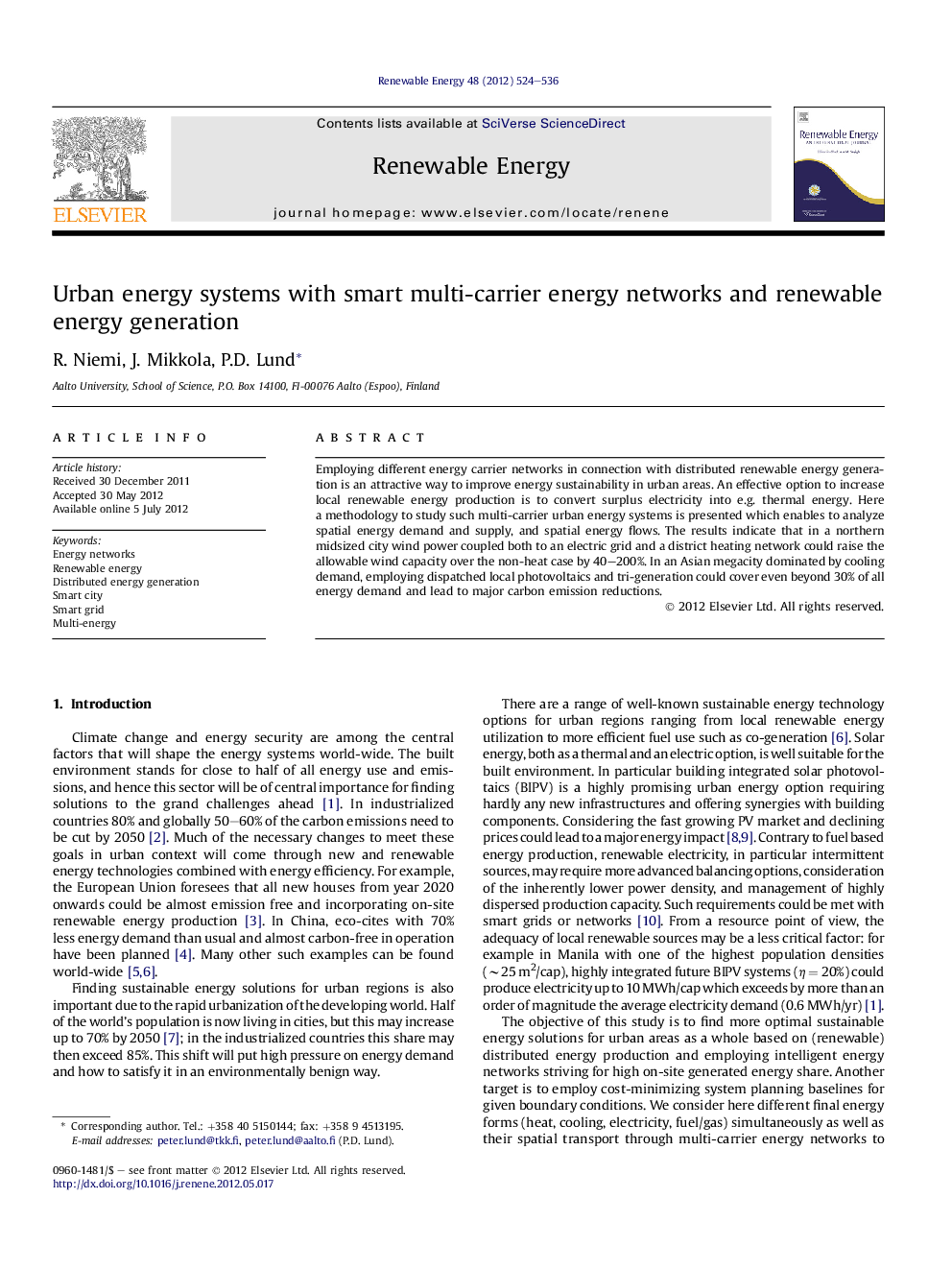| Article ID | Journal | Published Year | Pages | File Type |
|---|---|---|---|---|
| 300908 | Renewable Energy | 2012 | 13 Pages |
Employing different energy carrier networks in connection with distributed renewable energy generation is an attractive way to improve energy sustainability in urban areas. An effective option to increase local renewable energy production is to convert surplus electricity into e.g. thermal energy. Here a methodology to study such multi-carrier urban energy systems is presented which enables to analyze spatial energy demand and supply, and spatial energy flows. The results indicate that in a northern midsized city wind power coupled both to an electric grid and a district heating network could raise the allowable wind capacity over the non-heat case by 40–200%. In an Asian megacity dominated by cooling demand, employing dispatched local photovoltaics and tri-generation could cover even beyond 30% of all energy demand and lead to major carbon emission reductions.
Graphical abstractFigure optionsDownload full-size imageDownload as PowerPoint slideHighlights► Spatial and temporal modeling of multi-energy systems in urban environment. ► Multi-energy networks enable higher renewable electricity use. ► Surplus RE electricity is effectively handled by electricity-to-thermal conversion. ► Urban PV with tri-generation in southern megacities increases the solar fraction. ► Northern cities could employ >40% more wind power with a multi-carrier approach.
